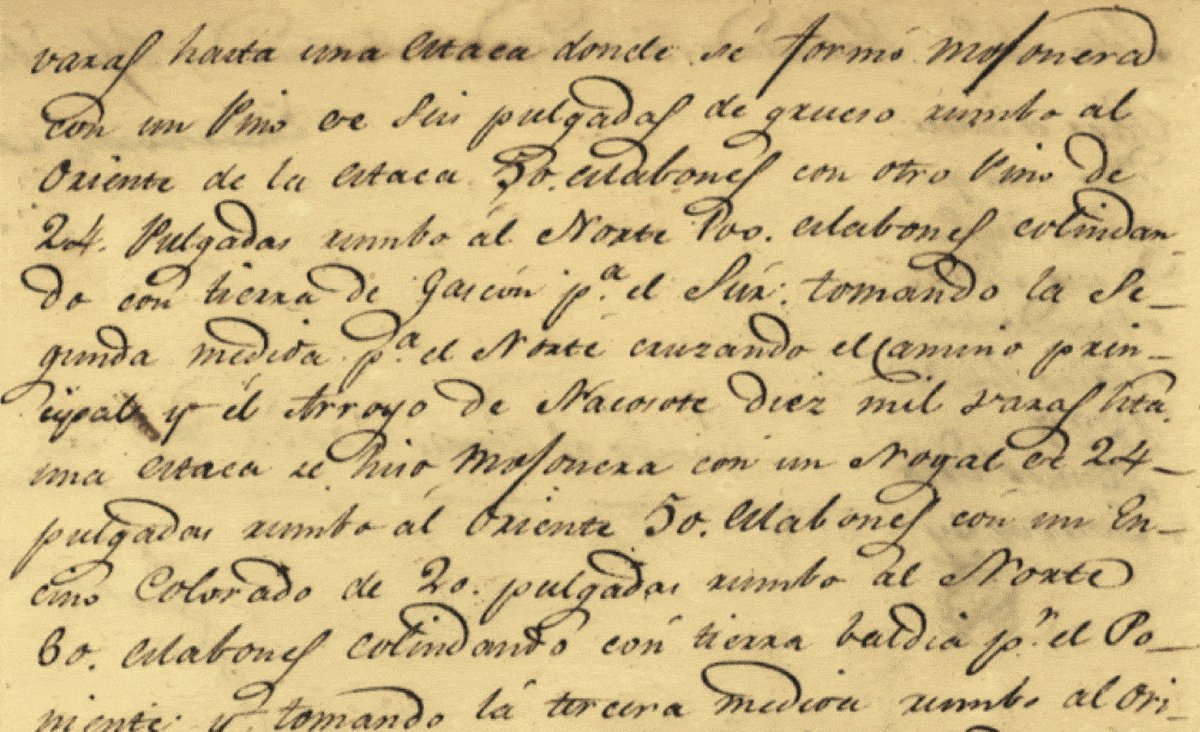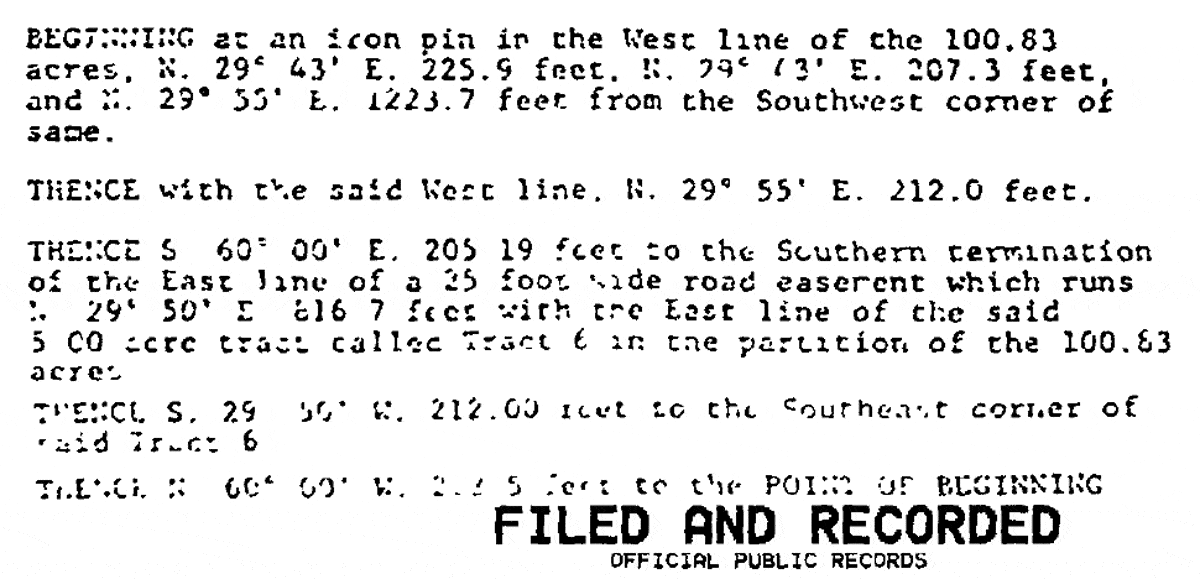Cursive writing & Land Surveyors
Quote from a-harris on April 23, 2016, 2:19 amFrom school I can remember that getting all the answers correct got you a grade of 90 and the other 10pts were gained by penmanship, neatness and organizational skills.
Cursive writing is an art and a measure of muscle control that everyone varies at and is something everyone needs to develop.
Apart from that, my signature looks more like an elaborate, singular scrawl and unreadable mark.
😉
From school I can remember that getting all the answers correct got you a grade of 90 and the other 10pts were gained by penmanship, neatness and organizational skills.
Cursive writing is an art and a measure of muscle control that everyone varies at and is something everyone needs to develop.
Apart from that, my signature looks more like an elaborate, singular scrawl and unreadable mark.
😉
Quote from thebionicman on April 23, 2016, 2:53 amEliminating cursive from our knowledge base cuts off access to hundreds of years of data. Thinking less of those who learned and used it with almost no educational infrastructure doesn't make sense either.
Perhaps it is my age, but I see this disdain for all things less than modern as a really bad thing. Embrace the new but for the love of all things holy don't discard tools and techniques simply because they are old. Learn the history first. See the usefulness first. Respect those who broke that ground, because we all ride the coattails of their work...
Eliminating cursive from our knowledge base cuts off access to hundreds of years of data. Thinking less of those who learned and used it with almost no educational infrastructure doesn't make sense either.
Perhaps it is my age, but I see this disdain for all things less than modern as a really bad thing. Embrace the new but for the love of all things holy don't discard tools and techniques simply because they are old. Learn the history first. See the usefulness first. Respect those who broke that ground, because we all ride the coattails of their work...
Quote from Kent McMillan on April 23, 2016, 3:40 amKnowing how to read cursive is considerably more important than how to write with it. For a land surveyor, it is as essential a skill as knowing Hawaiian to understanding old Hawaiian property records. In Texas, of course, there are other skills required to read some old instruments:
But thank heavens for the Xerox Corporation and FAX MACHINES:
Knowing how to read cursive is considerably more important than how to write with it. For a land surveyor, it is as essential a skill as knowing Hawaiian to understanding old Hawaiian property records. In Texas, of course, there are other skills required to read some old instruments:
But thank heavens for the Xerox Corporation and FAX MACHINES:
Quote from Kent McMillan on April 23, 2016, 4:08 amBTW, for the folks who will be taking the next Texas exam, that would be (without the diacritical marks):
"varas hasta una estaca donde se formo mojonera
con un Pino de Seis pulgadas de grueso rumbo al
Oriente de la estaca 50 eslabones con otro Pino de
24 Pulgadas rumbo al Norte 100 eslabones y continuan-
do con tierra de Garcon para el Sur tomando la se-
gunda medida para el Norte cruzando el Camino Prin-
cipal y el Arroyo de Nacosote diez mil varas hasta
una estaca se hizo mojonera con un Nogal de 24
pulgadas rumbo al Oriente 50 eslabones con un En-
cino Colorado de 20 pulgadas rumbo al Norte
60 eslabones colindando con tierra baldia para el Po-
niente Y tomande la tercera medida rumbo al Ori[ente]"
BTW, for the folks who will be taking the next Texas exam, that would be (without the diacritical marks):
"varas hasta una estaca donde se formo mojonera
con un Pino de Seis pulgadas de grueso rumbo al
Oriente de la estaca 50 eslabones con otro Pino de
24 Pulgadas rumbo al Norte 100 eslabones y continuan-
do con tierra de Garcon para el Sur tomando la se-
gunda medida para el Norte cruzando el Camino Prin-
cipal y el Arroyo de Nacosote diez mil varas hasta
una estaca se hizo mojonera con un Nogal de 24
pulgadas rumbo al Oriente 50 eslabones con un En-
cino Colorado de 20 pulgadas rumbo al Norte
60 eslabones colindando con tierra baldia para el Po-
niente Y tomande la tercera medida rumbo al Ori[ente]"
Quote from DeletedUser on April 23, 2016, 2:43 pmMy parochial school Palmer Method penmanship was never all that good. Maybe it was the ultra-discipline of the nuns threatening and enacting corporal punishment and other verbal denigration. I am embarrassed to this day about my writing.
Our son about 6 years ago or so in 2nd grade asked about cursive. They had stopped teaching it at the public elementary. We showed him cursive and he was interested in it. He thought it was cool like a secret code writing. We briefly home schooled him in cursive. He would read some and write some. We left him notes in cursive and birthday and other cards. We let him do exercises on his own and then he found another interest for home study. I asked at school why did they stop teaching cursive and the reply was the time was better relegated to math or science. I guess topics that show on standardized testing scores.
Truth be told now, he has excellent printing kills. I saw his Jr HS science notes recently and they were neat, organized and extremely legible. I was impressed.I know the politician who introduced this bill and from association, I have a good hunch of the surveyor mentioned in the news item.
My parochial school Palmer Method penmanship was never all that good. Maybe it was the ultra-discipline of the nuns threatening and enacting corporal punishment and other verbal denigration. I am embarrassed to this day about my writing.
Our son about 6 years ago or so in 2nd grade asked about cursive. They had stopped teaching it at the public elementary. We showed him cursive and he was interested in it. He thought it was cool like a secret code writing. We briefly home schooled him in cursive. He would read some and write some. We left him notes in cursive and birthday and other cards. We let him do exercises on his own and then he found another interest for home study. I asked at school why did they stop teaching cursive and the reply was the time was better relegated to math or science. I guess topics that show on standardized testing scores.
Truth be told now, he has excellent printing kills. I saw his Jr HS science notes recently and they were neat, organized and extremely legible. I was impressed.
I know the politician who introduced this bill and from association, I have a good hunch of the surveyor mentioned in the news item.
Quote from Andy Nold on August 23, 2018, 5:43 pmI was missing a field note description for a survey adjoining my subject tract so I called the repository to have it read to me. The young lady who answered the phone struggled for several minutes to get through the description which was printed in what I though was fairly legible script dating to 1888. I had the adjoining field notes, so I was able to help her with some of the harder monument references like, "hill" and "El Capitan". I couldn't help but wonder how old she is and whether she has previously had much exposure to cursive.
I was missing a field note description for a survey adjoining my subject tract so I called the repository to have it read to me. The young lady who answered the phone struggled for several minutes to get through the description which was printed in what I though was fairly legible script dating to 1888. I had the adjoining field notes, so I was able to help her with some of the harder monument references like, "hill" and "El Capitan". I couldn't help but wonder how old she is and whether she has previously had much exposure to cursive.
Quote from zapper on August 23, 2018, 6:25 pmWhen I was a little kid first learning to write like a big person, I misheard and thought it was called the curse of writing.
When I was a little kid first learning to write like a big person, I misheard and thought it was called the curse of writing.
Quote from ars-mine-surveyor on August 23, 2018, 6:42 pmUnfortunately cursive is no longer taught in New York public schools, so if either of my boys want to follow in my foot steps,?ÿ my wife and I will have to teach them cursive. In rural areas, I only have to go back a few deeds to find a hand written description.
Unfortunately cursive is no longer taught in New York public schools, so if either of my boys want to follow in my foot steps, my wife and I will have to teach them cursive. In rural areas, I only have to go back a few deeds to find a hand written description.
Quote from Mark Mayer on August 23, 2018, 9:36 pm... In rural areas, I only have to go back a few deeds to find a hand written description.There is the type where the entire document was transcribed into the deed book by the county clerk, then there is the type where the standard printed form is filled in handwritten, typically in cursive. The latter type can be found today everywhere.?ÿ ?ÿ?ÿ
... In rural areas, I only have to go back a few deeds to find a hand written description.
There is the type where the entire document was transcribed into the deed book by the county clerk, then there is the type where the standard printed form is filled in handwritten, typically in cursive. The latter type can be found today everywhere.
Quote from ppm on August 23, 2018, 9:41 pmTip: for those documents written in cursive. A lot of times I will type them out as I read them and just leave underscores for words/numbers I cannot yet determine. Then staple a print of that to the back or add it as a second page on the PDF file. That way next time I need to read it, I can MUCH faster.?ÿ
Never thought of it this way, but it could be a service I provide to younger surveyors that can't read cursive.?ÿ
Tip: for those documents written in cursive. A lot of times I will type them out as I read them and just leave underscores for words/numbers I cannot yet determine. Then staple a print of that to the back or add it as a second page on the PDF file. That way next time I need to read it, I can MUCH faster.
Never thought of it this way, but it could be a service I provide to younger surveyors that can't read cursive.






